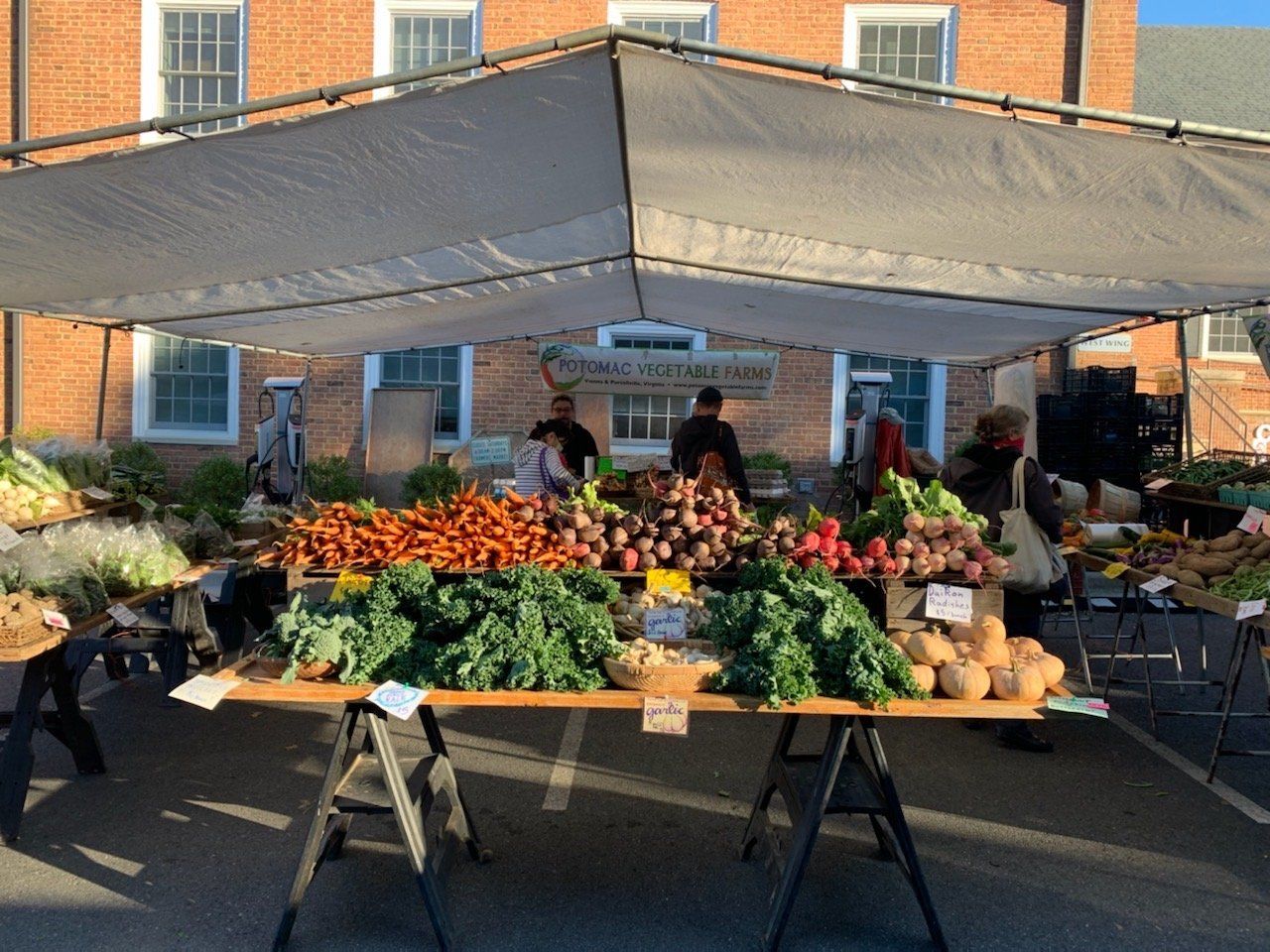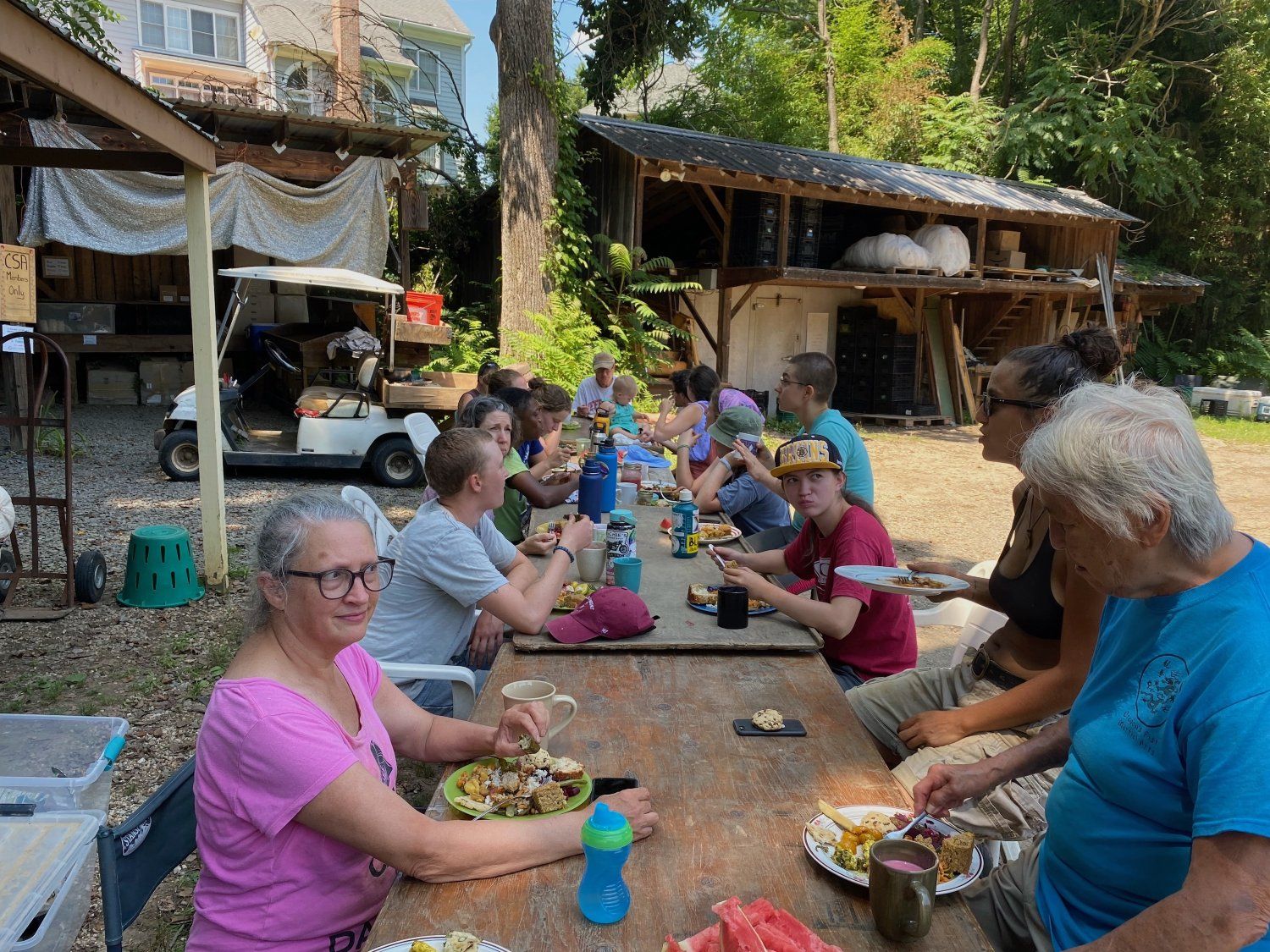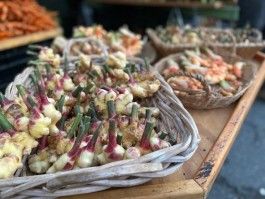 Towards the end of October, we go back into the high tunnels. These are structures made of a row of strong metal hoops that are about 13' feet tall at their highest point. The tunnels, also called hoop houses, are 100 to 150 feet long, depending on how much ground we decided to use when we built them. They are covered with two layers of plastic so that we can blow air into the space between those layers, providing a little more insulation from the winter temperatures. These are low tech buildings, but in the winter they can get quite toasty on a sunny day. The doors are their weak point, often letting cold air leak in if they don't close properly or the plastic starts to suffer wear and tear.
Towards the end of October, we go back into the high tunnels. These are structures made of a row of strong metal hoops that are about 13' feet tall at their highest point. The tunnels, also called hoop houses, are 100 to 150 feet long, depending on how much ground we decided to use when we built them. They are covered with two layers of plastic so that we can blow air into the space between those layers, providing a little more insulation from the winter temperatures. These are low tech buildings, but in the winter they can get quite toasty on a sunny day. The doors are their weak point, often letting cold air leak in if they don't close properly or the plastic starts to suffer wear and tear.
All winter long, we open the big doors at the ends of the tunnels every day. There needs to be good air exchange so the plants can breathe and diseases won't develop. It is like having a big pet. You can't forget to open the doors, you have to pay attention to the moisture levels (and water on the days that it is warm enough to turn the hoses on), and you have to watch for signs of illness. And like a pet, the tunnels that can bring so much joy when they are happy and healthy.
We recently dug all the ginger and turmeric that have been in the tunnels since late May. Some of the tunnels got a rest this summer, and we took the plastic off of one of them to allow some real weather to help to re-balance the soil.
 One of the big challenges of growing under plastic is keeping the soil healthy. Because it never gets to experience real rain, there is never a chance for the soil to get flushed out. Salts can build up. Nutrients can get out of balance. It all feels sort of mysterious, trying to figure out what the tunnels really need, even with soil tests.
One of the big challenges of growing under plastic is keeping the soil healthy. Because it never gets to experience real rain, there is never a chance for the soil to get flushed out. Salts can build up. Nutrients can get out of balance. It all feels sort of mysterious, trying to figure out what the tunnels really need, even with soil tests.
Another challenge is snow. A heavy, wet snow can crush a tunnel. Before we started to put vertical supports down the center (dramatically increasing the strength of the hoops), we used to get up in the night during snow storms and push the snow off the tops of the tunnels. That is absolutely one of the hardest jobs in all of farming—pushing snow off the roof while stomping around in snow that is up to your hips. Now we can trust in our improved engineering, and we stay in bed while it snows.

This week we will start getting the soil ready for plants and over the next few weeks we will put new plastic on most of the tunnels. We only do that once every 5 years or so, but we had to wait an extra year this time because of supply chain issues—we ordered the plastic a year ago and it arrived toward the end of winter. Luckily the old plastic held up well enough and it was not bitterly cold last winter.
These hoop houses will grow the leafy greens that we will pick in February and March and April for the Winter CSA. It is a small scale, laborious process, but greens in winter are delicious and packed with nutrients. This is how they grow almost all the fresh produce in the south of Spain (without the problem of snow, so they don't need hoops, every roof is flat, and they can cover acres at a time). So when you eat your greens this winter, don't waste a single leaf. These crops take an inordinate amount of effort to grow!
For more recipe ideas you can find us on Pinterest!




